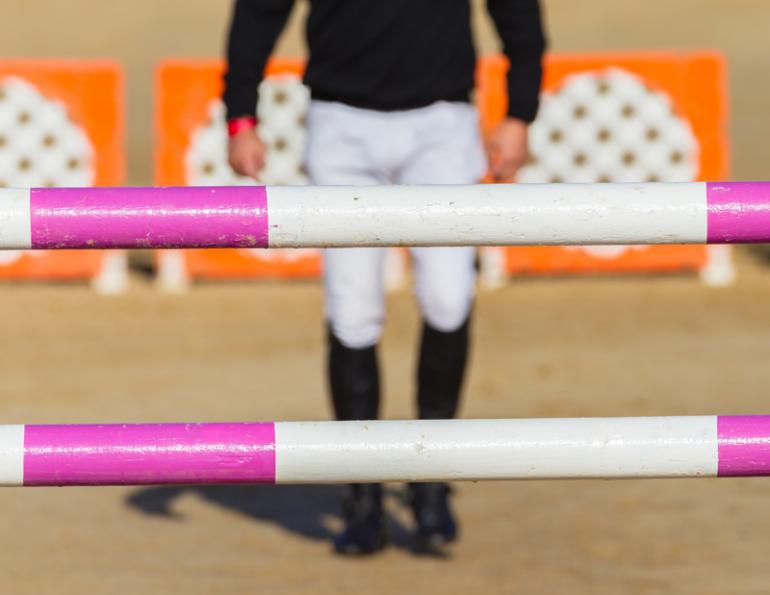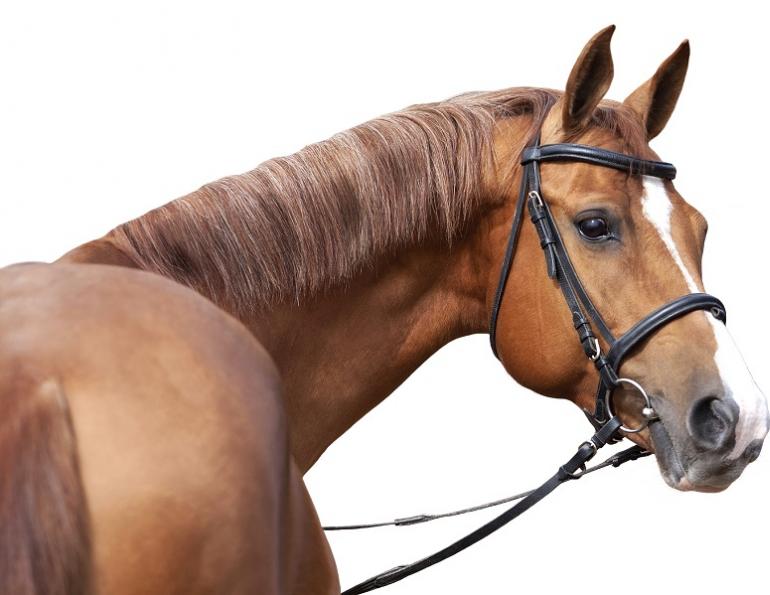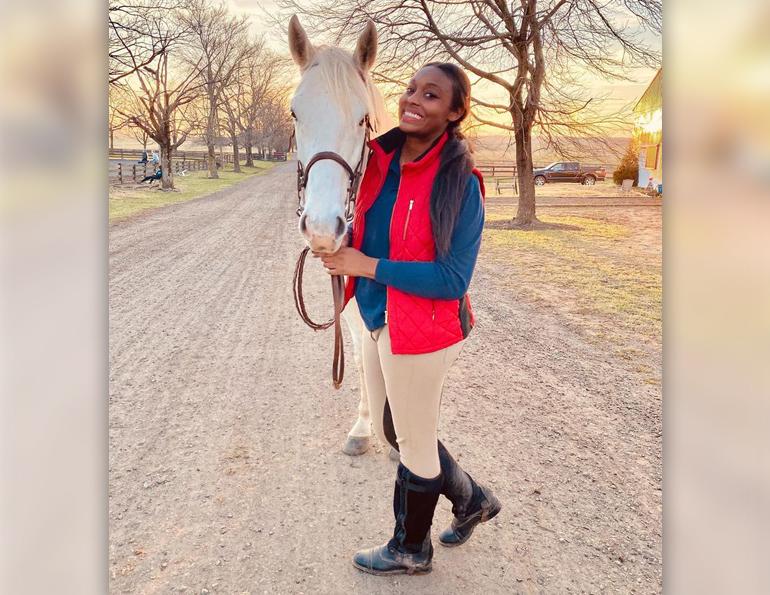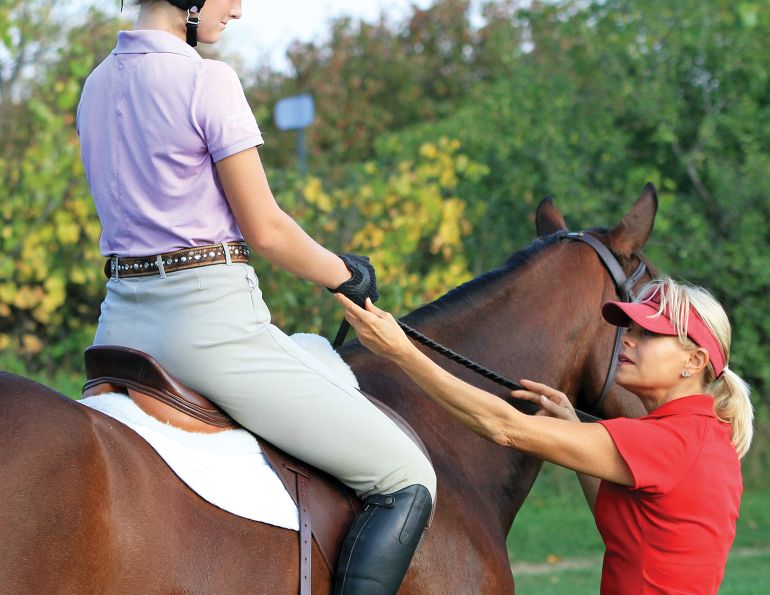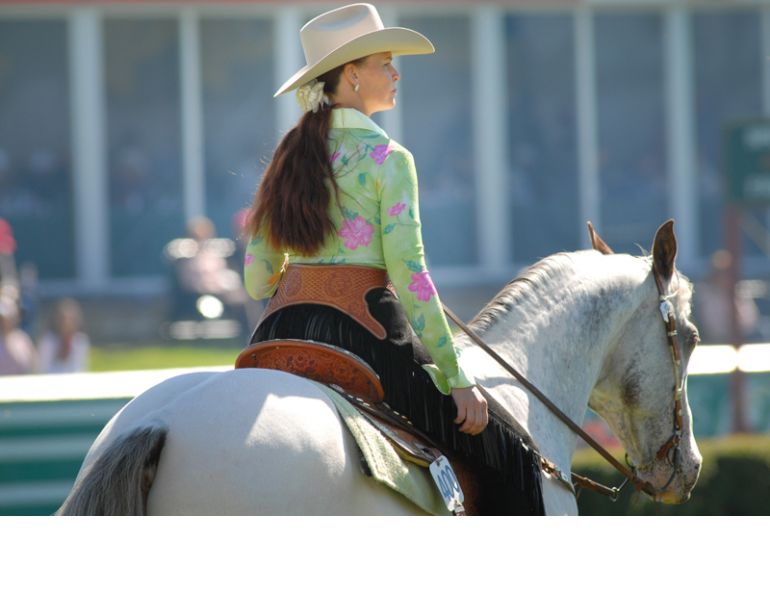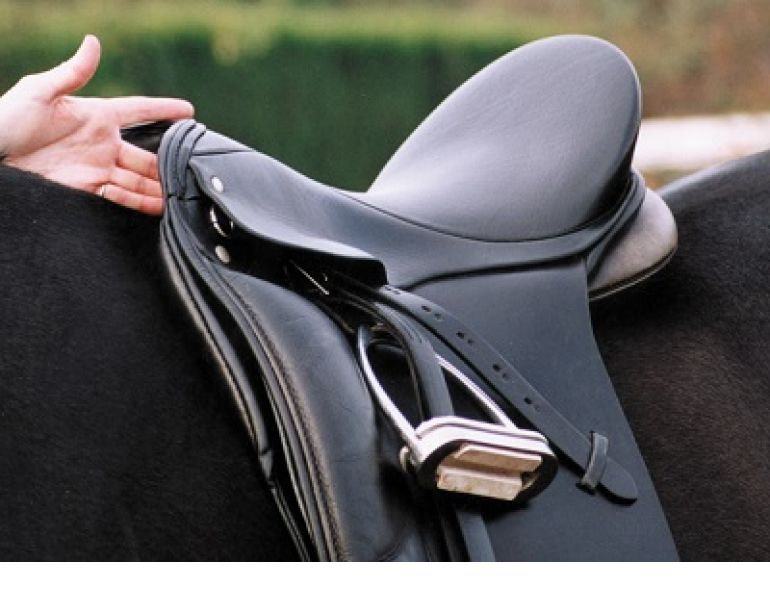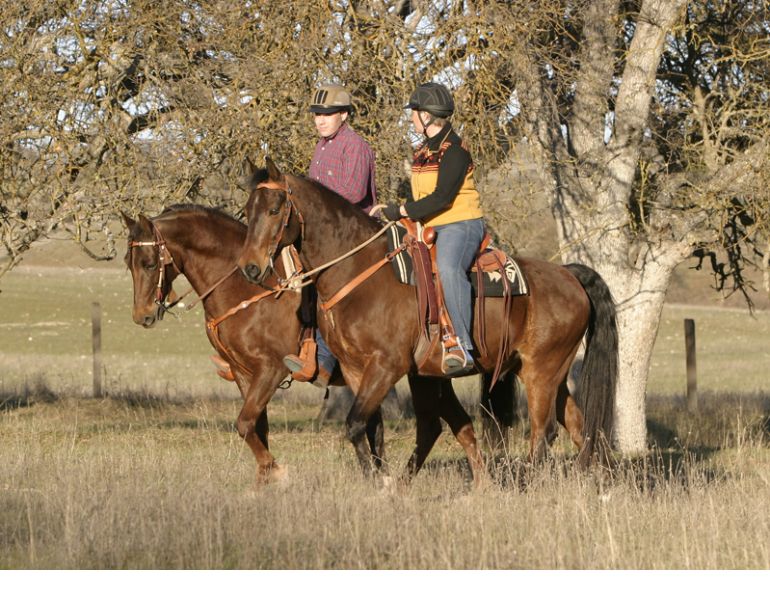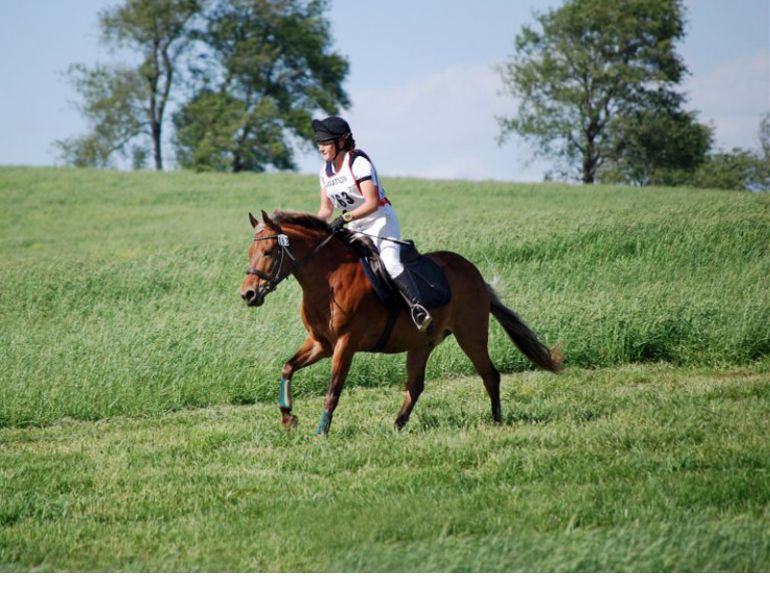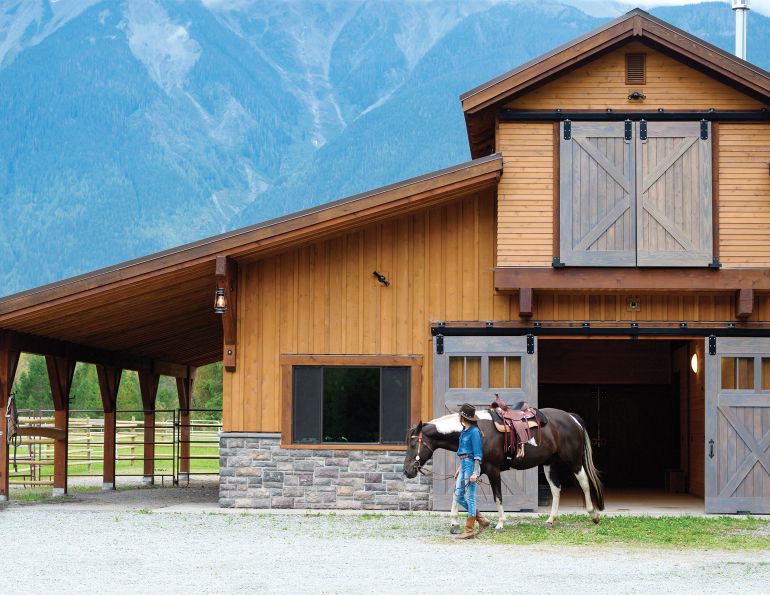"The will to win means nothing without the will to prepare." - Juma Ikangaa, Tanzanian marathon runner
By April D. Ray
Preparation is the key to success in every sport. One of the best ways to prepare to jump your course at a horse show is by walking it first.
Whether you are competing in the jumper ring or on a cross-country course, getting a closer look at the course you are about to tackle is essential to the successful planning and execution of your ride. It’s not typical to walk a hunter course except for the more complicated tracks for derbies or handy hunter classes. Depending on the horse show and schedule, make sure you have ample time to walk the course. Some people walk it multiple times, but that depends on personal preference and available time. Typically, show organizers will open the field for a set time before the class starts. Walking with your coach is ideal, allowing you to ask questions and come up with a game plan together. If your coach isn’t available, walk with an experienced friend who can give you a second perspective, and even better if that friend is familiar with you and your horse.
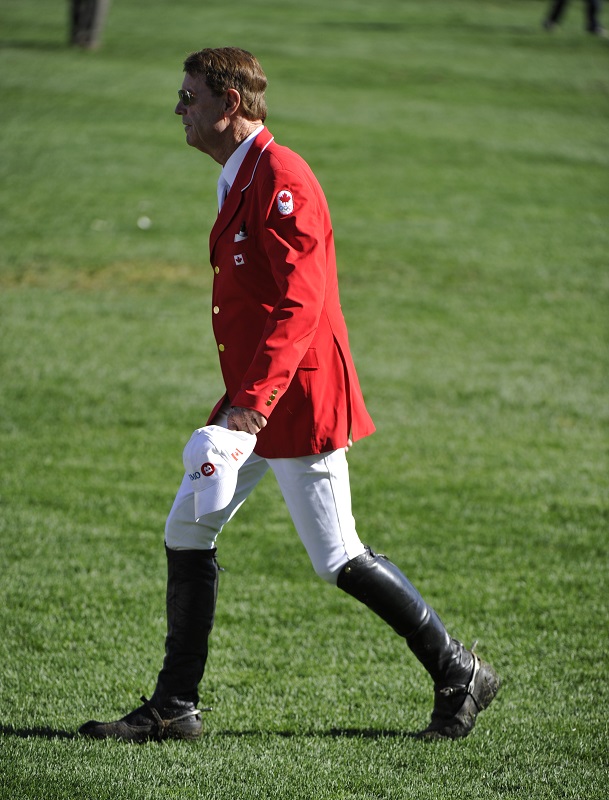
Canadian Olympian Ian Millar walks the course before the CN International at Spruce Meadows in 2013. He is a student of the “P” principle: proper preparation prevents poor performance. Photo: Robin Duncan Photography
Learn the Course
Start by taking pictures of the posted course or courses with your cell phone. They photos will help you find your way around while walking, and assist in memorizing the course before the class without having to run back to where the courses are posted. If you struggle to commit to memory a complicated jumper course and jump-off, repetition is vital; go over the course again and again until it’s locked in your memory. Walking it multiple times is also helpful, along with visualizing yourself riding it; not only will this help with memorization, visualization is also a powerful tool to reduce performance anxiety and build confidence.
A good course designer will include a few challenges appropriate for the height and level of each class. Walking the course gives you the opportunity to figure out how to navigate those challenges and how to answer the questions the designer asks of you and your horse. Whether the course calls for starting at a jump going away from the out-gate, navigating a complicated track, or riding two related fences set on a half-stride option, walking the course allows you to prepare for those challenges. If there is a particularly spooky jump or spot in the ring, you might plan to show it to your horse if time allows once you enter the ring.
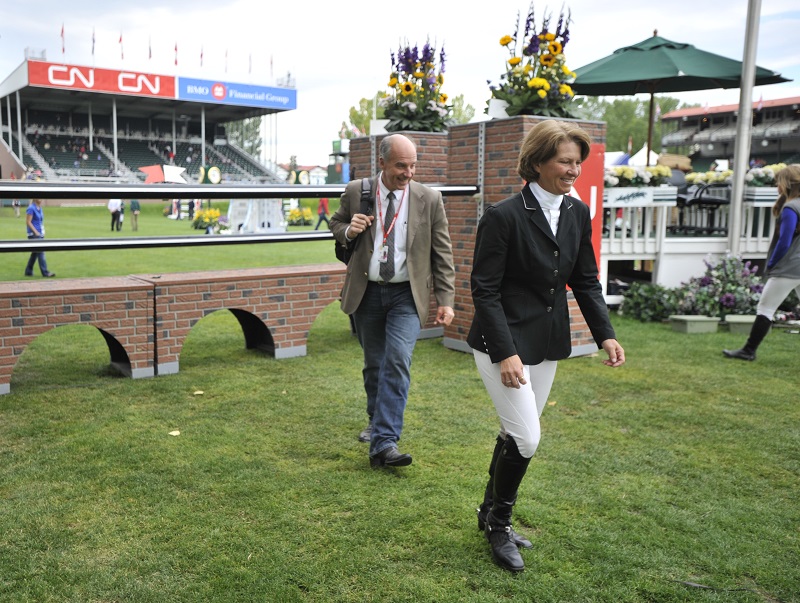
If you’re an experienced rider or short of time you may be tempted to skip the course walk. Just remember: Veteran riders like Beezie Madden don’t leave anything to chance. Photo: Robin Duncan Photography
While it’s easy to tell yourself there’s no need to walk the course, especially if you’re a seasoned rider or if time is short, don’t leave anything to chance. Take the time to walk and review several times before you ride. A little preparation will go a long way on the road to success.
Related: Building Stronger Horses
Walk the Course
When you walk the course, plan your track to each fence and find out the distance between any related fences. While having a plan for every fence and track is essential, you should also have a backup plan and be flexible depending on what might happen while on course. We all know that when it comes to horses, things don’t always go as planned, so be prepared for multiple possibilities and for whatever ride your horse may give you. This might mean walking multiple tracks so you can avoid surprises. Keep an eye out for anything that might be spooky or challenging for you or your horse, but don’t over-anticipate problems. Be “quietly aware” of things your horse might look at so you are prepared and have a plan just in case, but make sure you don’t spook at something before your horse does!
I don’t typically worry about any two jumps spaced more than seven strides apart; instead, I ride “off my eye” and based on how I jump in, but every rider will have a different preference on this. As far as walking the distances between related jumps and combinations, ensure that your “human step” is around three feet or just under a metre. At a horse show, distances are usually set for a horse’s twelve-foot stride, allowing about six feet each for take-off and landing. That means you would walk two human steps for the take-off, four steps for each horse stride, followed by two more steps for take-off. I walk two steps for landing, then every four steps after that I count as one stride, and then two final steps for the take-off, and I use my fingers to keep count of each horse stride along the way (four of my steps.) Just like there is no shame in grabbing mane over a fence, there is no shame in using your fingers to keep count of strides! Doing so will save you from getting to the second jump when walking a related line, and realizing you’ve completely lost count.
Related: Performance Prep 101: Countdown - From Training to Show Ring
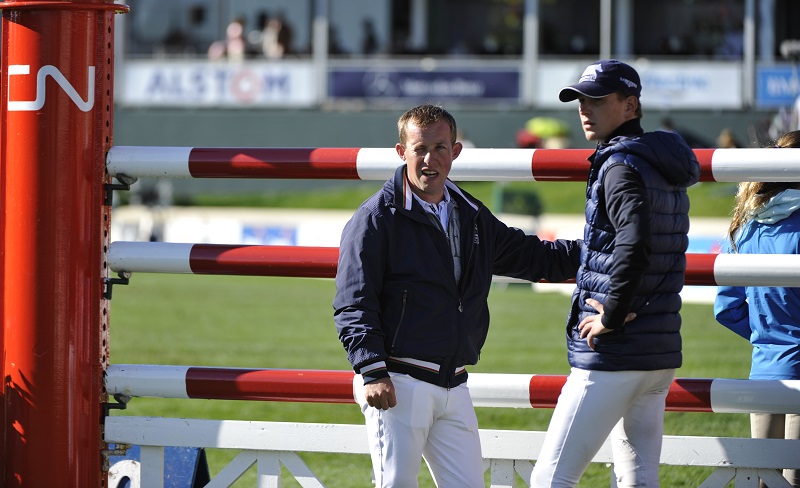
Your coach or another knowledgeable rider who knows you and your horse well can help you come up with the best game plan. Photo: Robin Duncan Photography
Keep in mind that the height of the jump and type of fence will affect the distances between and how the course will ride. As the jumps get bigger, room for error gets smaller. Consider the footing as well; if the footing is deep, the distances will ride a little longer. Also, some horses tend to get faster going towards “home,” and a little stickier going away. Be aware of the time allowed; if it’s tight you might want to find some places on course where you can save time with a more efficient track.
It is crucial to note where the start and finish timers are located. I learned this lesson the hard way when I laid down a beautiful round, but got disqualified for not going through the timers because I didn’t know where they were!
Your plan will, of course, vary greatly depending on your goals for the course. If your horse is young and your goals are to have a successful and confidence-building trip, you might want to take your time and not worry so much about speed as about having an easy ride and getting over every jump. If you are in it to win it, you’ll be looking for places to shave off time with more direct tracks and inside turns, all the while making sure you can jump a clear round.
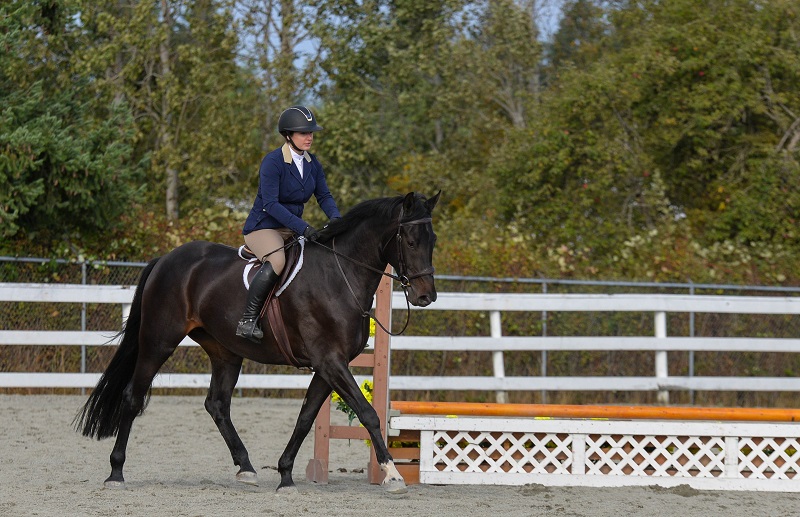
While walking the course you might notice a particularly spooky jump or area in the ring, and decide to show it to your horse once you’re in the ring, if time allows. Photo: Soul Touch Photography
Tips and Tricks
In addition to walking the course, watching your fellow competitors ride the course can be helpful as long as you aren’t the type to get psyched out, especially if things don’t go well for them. Watching others ride the course can help you memorize it, and allows you to see how the lines and tracks ride and how others navigate the challenges, but don’t let it make you stray too far from your original plan.
No matter how much planning you put in place, something may still go wrong. While it’s easier said than done, if you do make a mistake, let it go and just keep riding. Carrying that mistake along with you for the rest of the ride is a burden you and your horse don’t need. Keep your eye and your brain moving forward to the next fence and let the mistake go – and if you figure out just how to do that, please let me know.
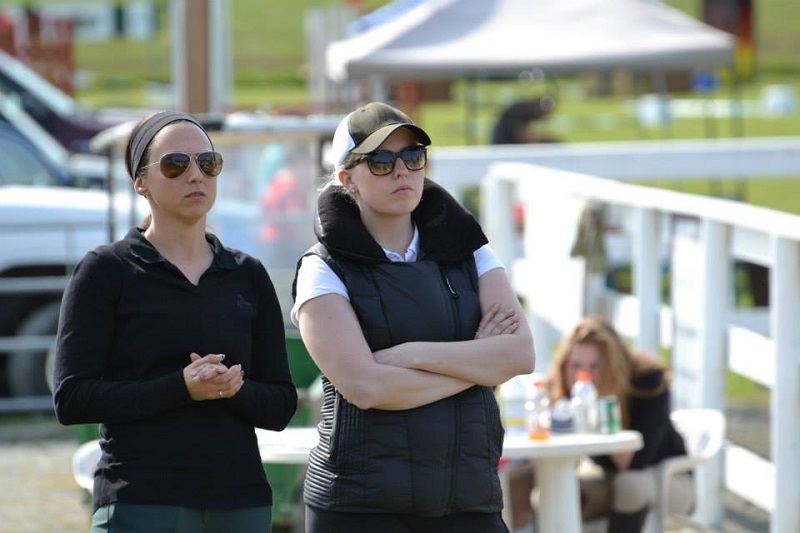
Watching rounds before competing helps you memorize the course and see how others navigate the challenges. Photo: Johanna Paper



